State-Of-The-Art Equipment
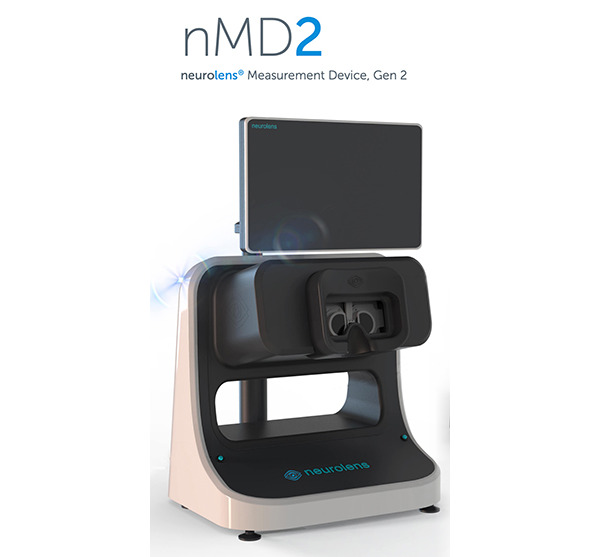
Neurolens
Neurolens is a revolutionary technology that uses contoured prism lenses to correct eye misalignments and reduce symptoms such as headaches, neck pain, and eye strain that are commonly associated with digital device use. These lenses work by targeting the muscles that control eye alignment, bringing the eyes into a more relaxed and natural position, thereby reducing the strain on the visual system. For patients who suffer from mild to severe symptoms, Neurolens can be life-changing, as it can significantly improve their quality of life, allowing them to use digital devices without experiencing discomfort or pain. With the increasing reliance on digital devices in modern society, the demand for Neurolens is likely to continue growing, making it an important tool for optometrists in helping their patients achieve optimal visual comfort and function.
Topcon Myah - Axial Length Device
Topcon Myah is a device used to measure the axial length of the eye, which is a critical factor in managing myopia, also known as nearsightedness. It is recommended that axial length measurements be taken every three months for children with myopia, as it can help determine the progression rate of the condition. The importance of this lies in the fact that myopia can lead to serious eye conditions like glaucoma and retinal detachment if left untreated, and early intervention is crucial in managing the condition. By monitoring axial length regularly, eye care professionals can adjust treatment plans for myopia management, such as altering the prescription for corrective lenses or suggesting MiSight daily soft contact lenses, orthokeratology or atropine eye drops. These treatments can help slow the progression of myopia and reduce the risk of associated eye problems later in life.
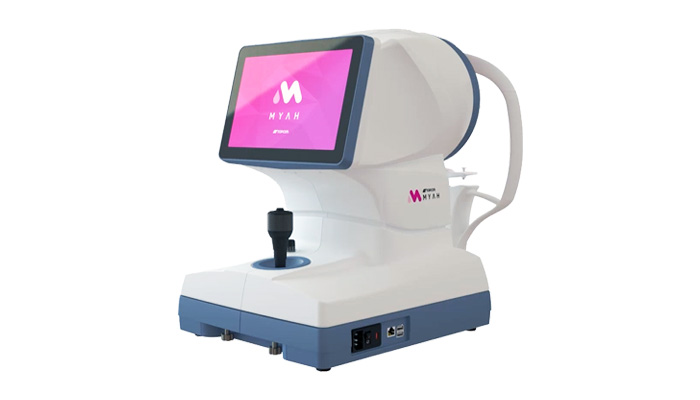
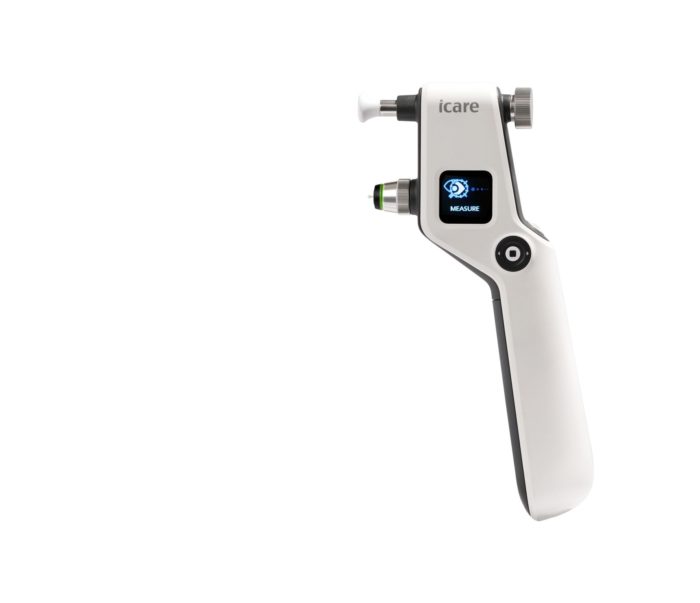
Pressure Check - iCare Tonometer
At PersonalEyes, we provide a convenient and accurate means of evaluating intraocular pressures, without the need for the traditional and often dreaded "puff of air" test. Our practice employs the iCare Tonometer, a device that aids in the diagnosis and management of conditions that impact intraocular pressure, including glaucoma. This painless and expeditious method provides instant pressure readings, which are minimally noticeable to the patient.
Digital Retinal Photography / Optical Coherence Tomography (OCT)
Topcon Maestro 2 is an advanced diagnostic tool that provides a comprehensive assessment of the eye's health. This device allows eye care professionals to capture 2-D retinal images and obtains 3-D optical coherence tomography (OCT) scans of the retina, providing high-resolution images of the eye's internal structures. It is essential to obtain retinal images and OCT scans on a yearly basis to monitor any changes that may occur in the eye's health. These changes could indicate the presence of eye conditions such as macular degeneration, glaucoma, or diabetic retinopathy, which can lead to vision loss if left untreated. Additionally, OCT scans can detect subtle changes in the retina's thickness, which may indicate the onset of disease. By undergoing yearly retinal imaging and OCT scans, patients can maintain optimal eye health and catch any potential issues early, improving their chances for successful treatment and preserving their vision.
Numerous ocular conditions can manifest without affecting vision, as Dr. Patel aptly states: "Vision and health are distinct entities; either can affect you independently of the other." Through a comprehensive retinal examination and comparison of digital images from previous visits, our team can detect the presence of various diseases. Additionally, we can identify systemic health issues like diabetes and high blood pressure, which may impact ocular health.
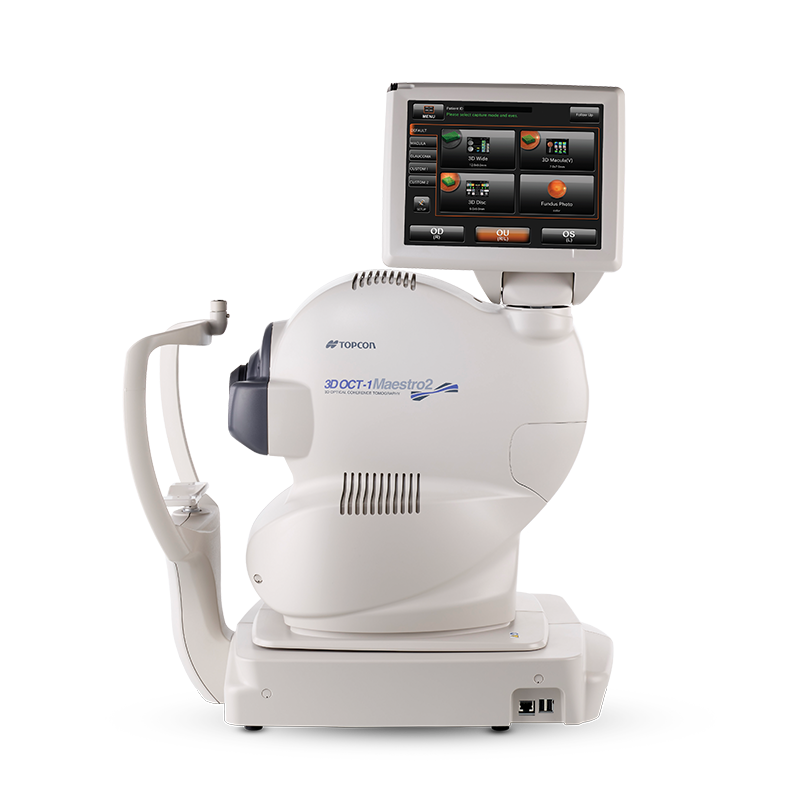
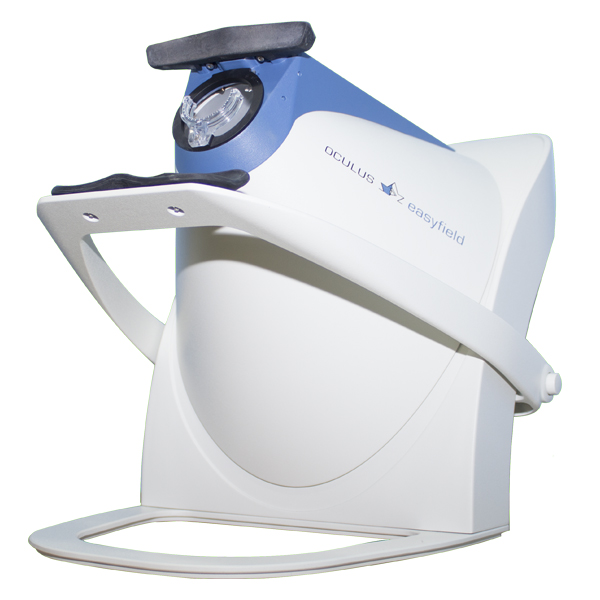
Oculus Visual Fields Test
There are two ways to evaluate the eyes: Functional Integrity & Structural Integrity. Our visual fields instrument is amongst the leaders in assessing the functional integrity of the human eye. The instrument looks for small areas of missing vision in your visual world. These defects are not noticed at early stages by people because the vision in their right and left eyes overlap. Diseases that manifest losses of visual fields includes glaucoma, multiple sclerosis, stroke, sleep apnea, pituitary tumors as well as many others. Subtle losses of visual fields may be the first sign of disease.
Corneal Topography / Photography / Meibomianography / Pupillometry
Corneal topography is an important piece of technology used to measure the shape and power of the cornea. Not only is it used to fit contact lenses, but it also helps Dr. Patel evaluate the ocular surface. With the TopCon CA-800, Dr. Patel can provide more specific and advanced management to contact lens fitting evaluations every year.
Our 4 in 1 instrument can perform numerous other tests. Anterior Segment Photography comes in handy when Dr. Patel needs to record a superficial defect or injury. This instrument can capture detailed photographs of the iris and pupil behind the cornea in addition to the cornea. It can also calculate horizontal visible iris diameter and provide surgeons/insurance companies information about eyelid placement in relation to the cornea and pupil.
A Meibographer is a type of imaging technique performed by special equipment which monitors the quality of ones meibomian glads. Every eyelid (top and bottom) have 25 glands that tend to deteriorate as we age. This test is very important for those who wear contact lenses and/or use digital devices on a regular basis.
Pupillometry evaluates the diameter of a pupil when exposed to different amounts light and darkness. Both pupils should be the same shape, size and react equally to light. Pupillary assessment is an important part of every comprehensive exam because changes in the size, equality and reactivity of the pupils can provide vital diagnostic information. Some examples of conditions that cause differently sized pupils include: brain injuries, concussion, aneurysm, glaucoma, stroke, optic neuritis, optic nerve damage, and many more.
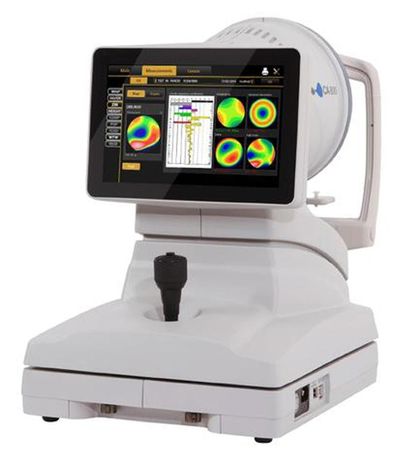
Below you will find a list of scenarios of when this technology is vital for patient care:
- When fitting a rigid gas permeable lens on the cornea, these Anterior Segment Photography with the assistance of fluorescein allows Dr. Patel and his consultants access to accurate data to customize lenses with ultimate precision.
- Patient whom have droopy eyelids secondary to excess skin or neurological issues need proof the condition is "medically necessary" in order for insurance plans to consider any coverage.
- When crisp and sharp 20/20 vision is unable to be acheived, performing a Corneal Topography Scan may provide important information such as Keratoconus, Pellucid Marginal Degeneration or Corneal Ectasia. Earlier these conditions are diagnosed, the better the visual outcome will be! Click Here To Learn More About Keratoconus!
- Pupillometry is performed when a doctor, technician or the patient themselves observes pupils asymmetric. 20% of the time, it is normal to have 2 different sized pupils. When its abnormal, this test is vital for those that might need additional investigation such as a cranial MRI or a chest X-Ray.
